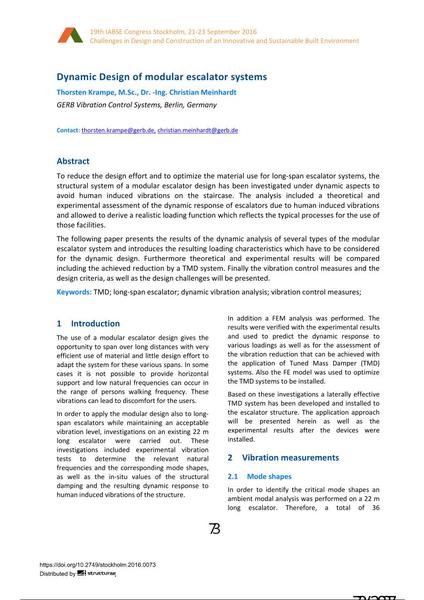Dynamic Design of modular escalator systems

|
|
|||||||||||
Détails bibliographiques
| Auteur(s): |
Thorsten Krampe
(GERB Vibration Control Systems, Berlin, Germany)
Christian Meinhardt (GERB Vibration Control Systems, Berlin, Germany) |
||||
|---|---|---|---|---|---|
| Médium: | papier de conférence | ||||
| Langue(s): | anglais | ||||
| Conférence: | IABSE Congress: Challenges in Design and Construction of an Innovative and Sustainable Built Environment, Stockholm, Sweden, 21-23 September 2016 | ||||
| Publié dans: | IABSE Congress Stockholm, 2016 | ||||
|
|||||
| Page(s): | 73-80 | ||||
| Nombre total de pages (du PDF): | 8 | ||||
| Année: | 2016 | ||||
| DOI: | 10.2749/stockholm.2016.0073 | ||||
| Abstrait: |
To reduce the design effort and to optimize the material use for long-span escalator systems, the structural system of a modular escalator design has been investigated under dynamic aspects to avoid human induced vibrations on the staircase. The analysis included a theoretical and experimental assessment of the dynamic response of escalators due to human induced vibrations and allowed to derive a realistic loading function which reflects the typical processes for the use of those facilities. The following paper presents the results of the dynamic analysis of several types of the modular escalator system and introduces the resulting loading characteristics which have to be considered for the dynamic design. Furthermore theoretical and experimental results will be compared including the achieved reduction by a TMD system. Finally the vibration control measures and the design criteria, as well as the design challenges will be presented. |
||||

